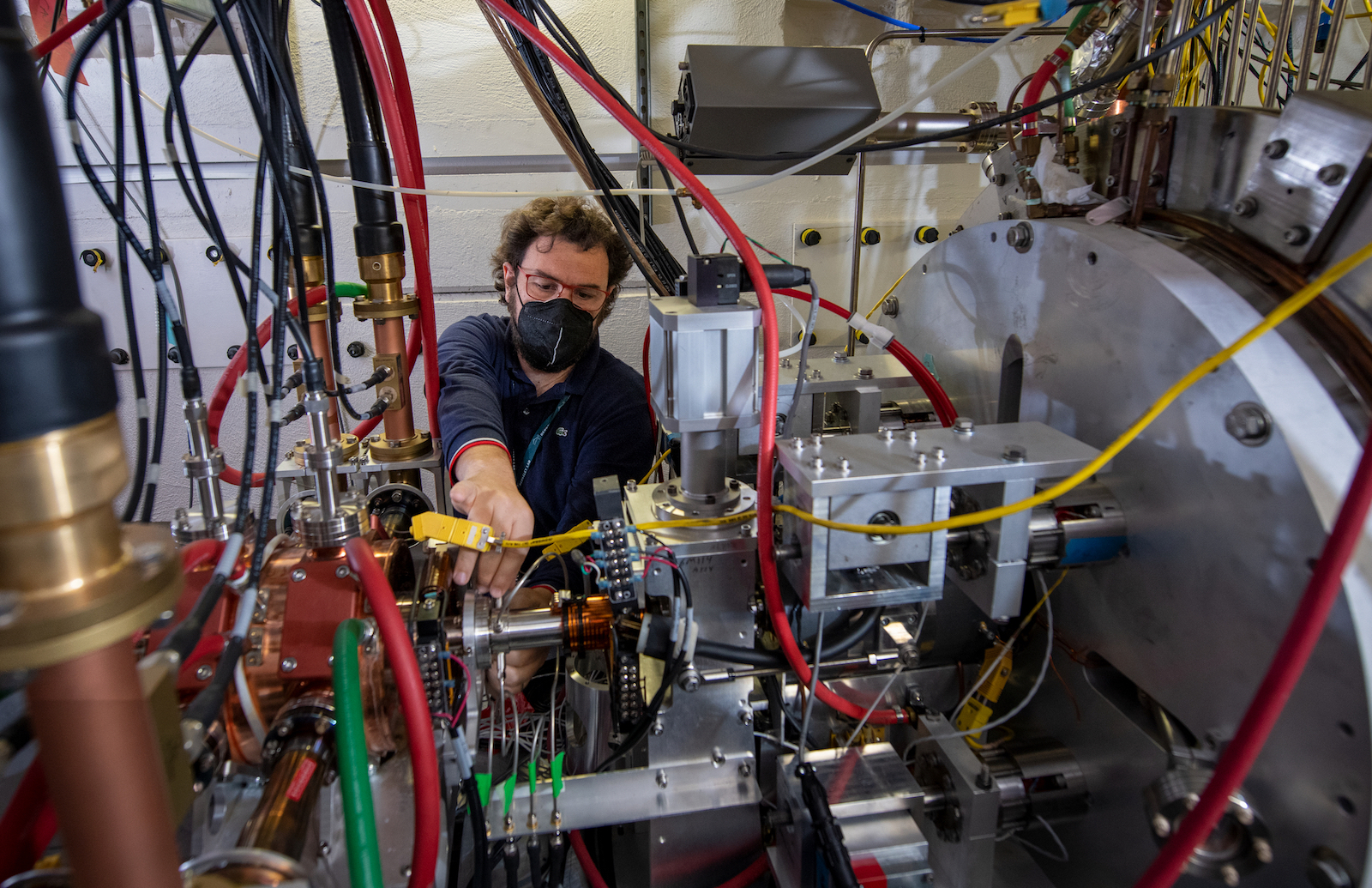Researchers at the Facility for Rare Isotope Beams reached a new milestone in isotope studies, accelerating a high-power beam of uranium ions to a record 10.4 kilowatts of continuous beam power to a target. The beam enabled scientists to produce and identify three new isotopes, gallium-88, arsenic-93, and selenium-96.
Tag: particle accelerator science
Dixit receives 2023 Rosalind Franklin Young Investigator Award
Marm Dixit, a Weinberg Distinguished Staff Fellow at the Department of Energy’s Oak Ridge National Laboratory, has received the 2023 Rosalind Franklin Young Investigator Award.
Putting Particle Accelerator Cavities to the Test
Since it first went online more than 30 years ago, the Vertical Test Area at the U.S. Department of Energy’s Thomas Jefferson National Accelerator Facility has gotten used to superlatives. One of the biggest testbeds of its kind. The busiest. The most versatile.Now, the Vertical Test Area that was created to help build Jefferson Lab’s main particle accelerator has hit another milestone: In 2022, it conducted a mind-boggling 470 different superconducting radiofrequency accelerator cavity tests. In the rarified world of accelerators, that’s an Olympic-level achievement.

Machine Learning Paves Way for Smarter Particle Accelerators
Scientists have developed a new machine-learning platform that makes the algorithms that control particle beams and lasers smarter than ever before. Their work could help lead to the development of new and improved particle accelerators that will help scientists unlock the secrets of the subatomic world.
U.S. Department of Energy Announces $18 Million to Advance Particle Accelerator Technologies and Workforce Training
he U.S. Department of Energy (DOE) today announced $18 million in new funding to advance particle accelerator technology, a critical tool for discovery sciences and optimizing the way we treat medical patients, manufacture electronics and clean energy technologies, and defend the nation against security threats.

Fermilab scientist Vladimir Shiltsev elected to the Bologna Academy of Sciences
Well-known and appreciated by the scientific community for his work on beam physics and supercolliders, Shiltsev joins an organization whose membership included Marie Curie, Albert Einstein and Luigi Galvani.

New Prototype Advances Particle Accelerators for Industry and Medicine
The most powerful particle accelerators on Earth are research machines built on superconducting radiofrequency technology. These accelerators are expensive and difficult to operate. Scientists have now built an accelerator prototype that uses off-the-shelf support systems that demonstrates it is possible to build and run powerful non-research accelerators at a fraction of the cost of research accelerators.

Fermilab scientists selected as APS fellows
Three Fermilab scientists have been selected 2020 fellows of the American Physical Society, a distinction awarded each year to no more than one-half of 1 percent of current APS members by their peers.